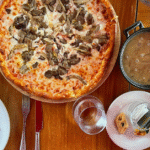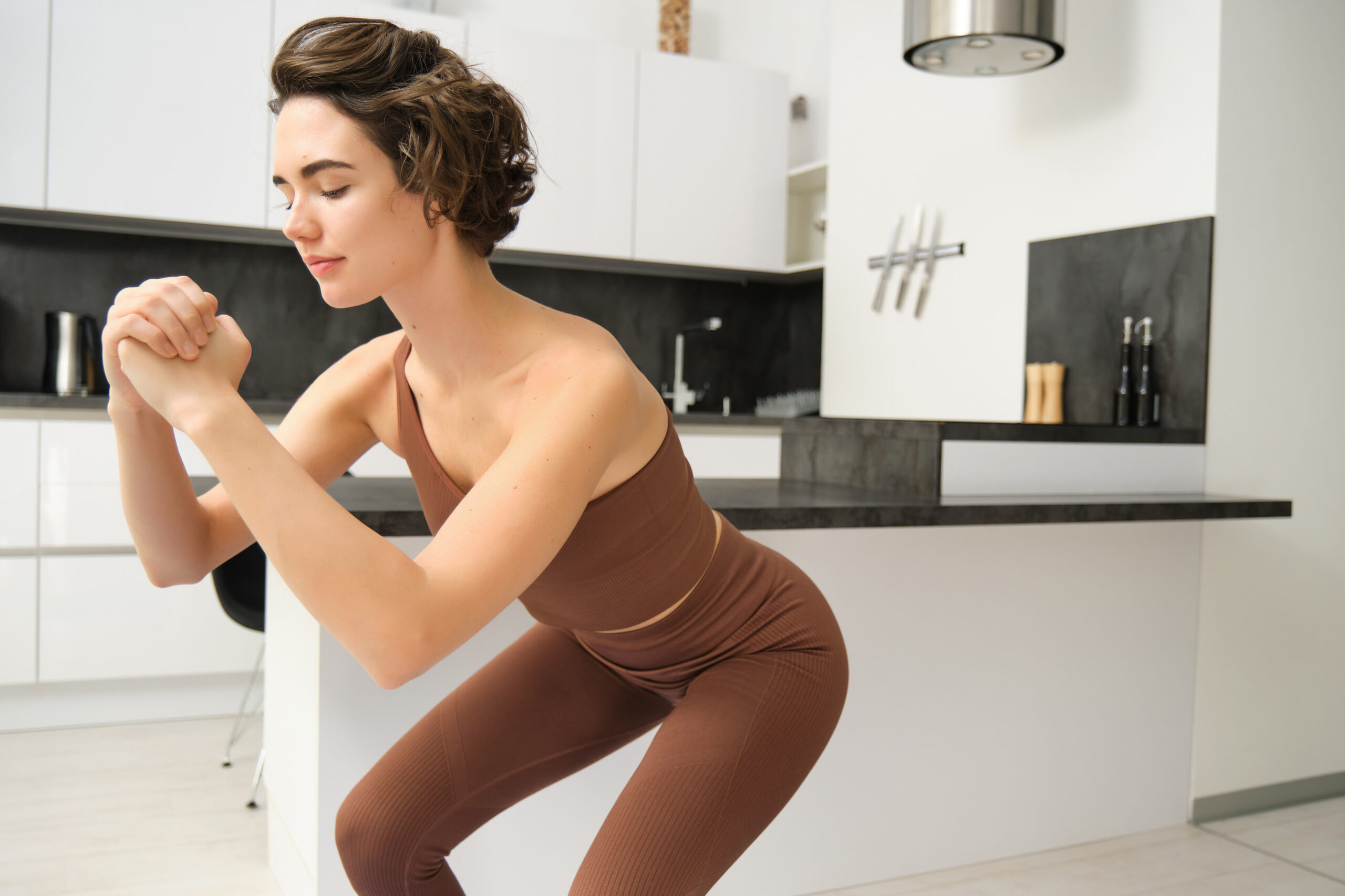Introduction: Why Squats Are a Calorie-Torching Favorite
Squats are one of the most effective compound exercises for Calories Burn Caleries, engaging major muscle groups like your glutes, quads, hamstrings, and core. Their ability to activate multiple muscles at once makes them excellent for calorie burning. Whether you’re looking to tone up, lose weight, or build strength, squats can be a powerful tool when done correctly and consistently.
What Affects Calories Burned During Squats?
1. Body Weight
Your body weight is a significant factor in how many calories you burn. A heavier person will naturally expend more energy to perform the same movement as someone lighter. For example, a 200-pound person will burn more calories doing 100 squats compared to a person who weighs 125 pounds. This is because moving more mass requires more energy.
2. Workout Intensity
The harder you work, the more calories you burn. Doing slow, controlled squats with added weights or explosive jump squats increases the intensity and raises your heart rate, boosting calorie burn. High-intensity squatting engages more muscle fibers and keeps your metabolism elevated even after your workout is over.
3. Duration and Reps
The total time spent and number of repetitions done also determine how many calories you’ll torch. Performing squats for a longer period or increasing your rep count will lead to higher energy expenditure. For instance, doing 3 sets of 15 reps burns fewer calories than doing 5 sets of 25 reps, especially if performed with shorter rest periods.
4. Squat Type
Different squat variations engage your muscles in unique ways and affect calorie burn. Basic bodyweight squats burn fewer calories than more complex variations like Bulgarian split squats, jump squats, or barbell squats. The more muscles you engage and the more balance required, the more calories you’ll burn.
How Many Calories Do You Burn Per Squat?
On average, each bodyweight squat burns between 0.32 to 0.64 calories. This range varies depending on the factors above. Doing 100 squats could burn between 32 and 64 calories, which makes squats a time-efficient exercise. The actual burn increases when adding weights or increasing intensity.
Calories Burned: Body Weight vs Squat Duration Table
| Body Weight (lbs) | 15 Min Bodyweight Squats | 15 Min Weighted Squats (Moderate) |
|---|---|---|
| 125 lbs | ~90 calories | ~135 calories |
| 155 lbs | ~112 calories | ~168 calories |
| 185 lbs | ~133 calories | ~200 calories |
| 200+ lbs | ~150+ calories | ~225+ calories |
Types of Squats and Their Calorie-Burning Power
Traditional Bodyweight Squats
These are performed using only your body weight and are perfect for beginners. Each rep burns about 0.3 to 0.5 calories. They’re effective for toning and building endurance in the lower body.
Goblet Squats
Holding a dumbbell or kettlebell at your chest, goblet squats increase resistance. This variation engages your upper body as well and burns about 0.5 to 0.8 calories per rep.
Jump Squats
This explosive movement combines cardio and strength, increasing the burn to about 0.6 to 1.0 calories per rep. It raises your heart rate quickly and improves your power and agility.
Weighted Barbell Squats
This classic gym move is a heavy hitter. With proper form and substantial weight, you can burn up to 1.2 calories per rep. It’s excellent for muscle building and metabolic boosts.
Bulgarian Split Squats
This unilateral squat requires balance, coordination, and core strength. It can burn between 0.8 to 1.1 calories per rep, making it a high-efficiency movement.
HIIT vs Traditional Squats: Which Burns More?
High-Intensity Interval Training (HIIT) versions of squats—like doing 30 seconds of jump squats followed by 15 seconds of rest—can significantly increase your calorie burn. Compared to traditional steady-paced squats, HIIT workouts can burn 30–50% more calories in the same amount of time due to increased heart rate and intensity.
Real-Life Example: 15-Minute Squat Workout Calorie Count
Workout Plan:
- 5 minutes warm-up
- 3 rounds of: 15 bodyweight squats, 15 jump squats, 15 goblet squats
- 30 seconds rest between rounds
Estimated Burn:
- Beginner (125 lbs): ~110 calories
- Intermediate (155 lbs): ~135 calories
- Advanced (185 lbs): ~160+ calories
How to Maximize Calorie Burn from Squats
- Add resistance (dumbbells, kettlebells, or barbells)
- Incorporate explosive movements like jump squats
- Reduce rest time between sets
- Increase the number of repetitions and sets
- Engage your core and glutes consciously during each squat
Common Mistakes That Lower Squat Effectiveness
- Performing shallow squats (not going low enough)
- Letting knees cave inward
- Using poor posture or leaning too far forward
- Rushing through reps without control
- Neglecting progressive overload (not increasing weight or reps over time)
Benefits of Squats Beyond Calorie Burn
- Increases overall lower-body strength
- Builds muscle mass, which boosts resting metabolic rate
- Improves mobility, balance, and coordination
- Enhances core stability and posture
- Supports better athletic performance and daily movement
How Squats Compare to Other Calorie-Burning Exercises
| Exercise | Calories Burned (30 min, 155 lbs) |
| Squats (moderate) | ~220 calories |
| Jumping jacks | ~180 calories |
| Running (6 mph) | ~372 calories |
| Cycling (12–13.9 mph) | ~298 calories |
While running and cycling may burn more during the activity, squats build muscle, which helps you burn more calories even at rest.
Top Apps and Trackers to Measure Calorie Burn
- MyFitnessPal: Easy food and workout logging
- Fitbod: Tracks strength training routines
- Apple Fitness+: Syncs with Apple Watch for accurate tracking
- Strava: Ideal for cardio and strength combos
- Garmin Connect: Great for serious athletes
- Whoop: Monitors strain and recovery to optimize training
Expert Tips for Effective Squat Training
- Always warm up before squatting to avoid injury
- Start with bodyweight to learn proper form
- Mix different squat variations to keep your routine fresh
- Track your progress weekly for motivation
- Don’t neglect rest days for muscle recovery
FAQs
1. How many squats should I do to burn 100 calories?
Depending on your weight and intensity, it may take between 150 to 300 squats to burn 100 calories.
2. Do squats help lose belly fat?
Yes, indirectly. Squats help burn overall body fat and build muscle, contributing to a higher metabolic rate which supports fat loss, including belly fat.
3. How many calories does 100 squats burn?
You can burn between 32 to 64 calories, depending on your weight and how intensely you perform them.
4. Can I do squats every day?
Yes, but it’s essential to vary intensity and volume. Incorporate rest days or alternate light and heavy squat sessions to avoid overtraining.
5. Do weighted squats burn more calories?
Yes. Adding resistance increases the effort required, engaging more muscle fibers and boosting calorie burn.
6. How can I track squat calories accurately?
Use fitness trackers with heart rate monitoring and workout logging features. Apps like MyFitnessPal and Apple Fitness+ provide reliable estimates.
Conclusion
Squats are an effective exercise for burning calories because they work many muscles at once. By understanding factors like your body weight, workout intensity, and squat variations, you can maximize the calories you burn. Adding weights or doing jump squats increases calorie burn even more.
Beyond just burning calories during exercise, squats help build muscle, which raises your resting metabolism, meaning you burn more calories even when not working out. Using proper form and varying your squat routine ensures better results and reduces injury risk.
In short, squats are a simple, powerful way to burn calories, build strength, and improve fitness. Start squatting smart to see lasting benefits!





